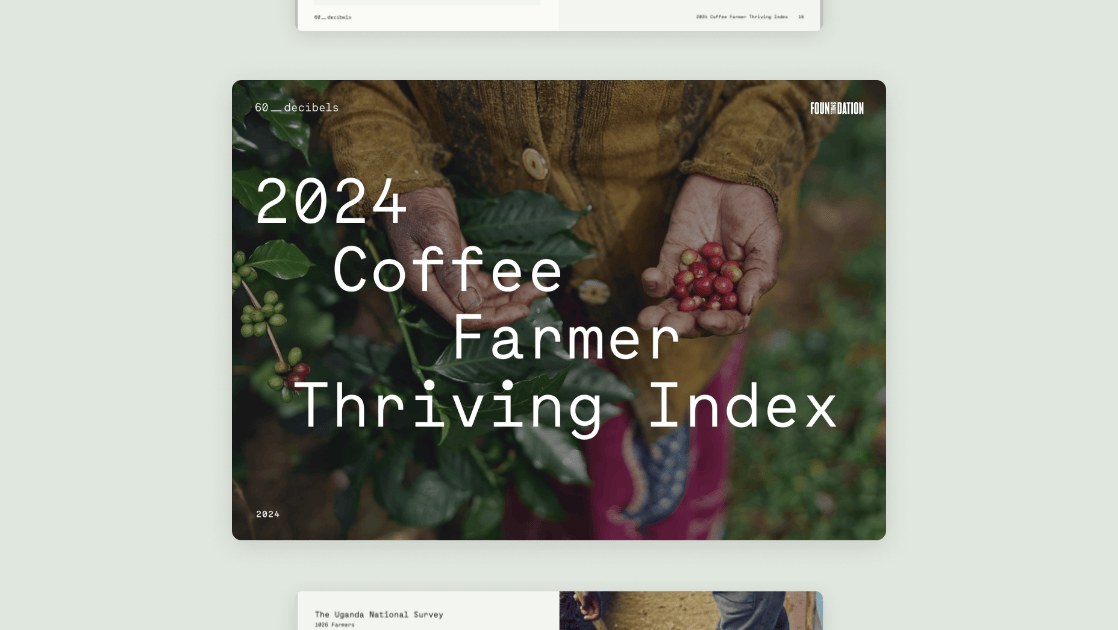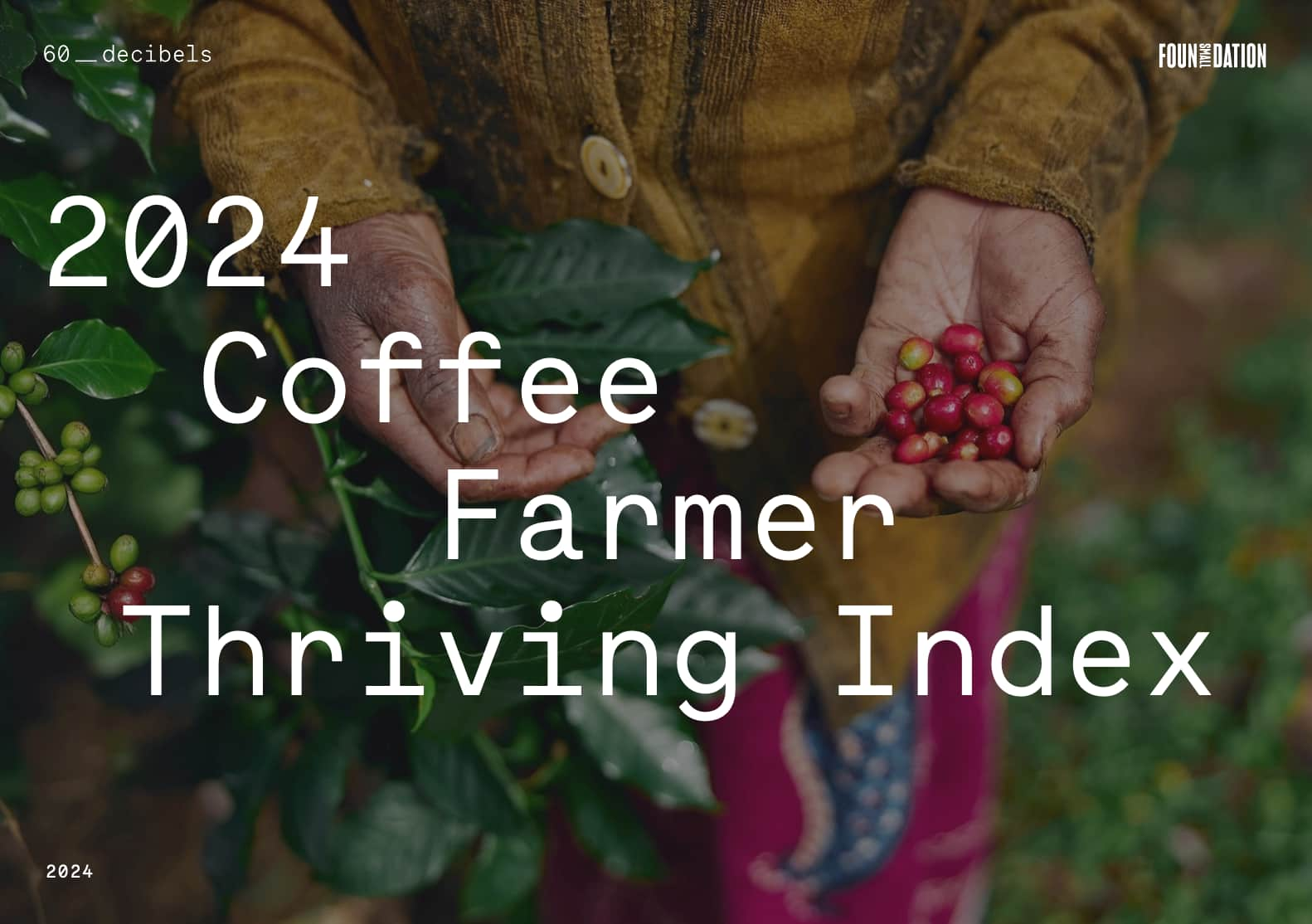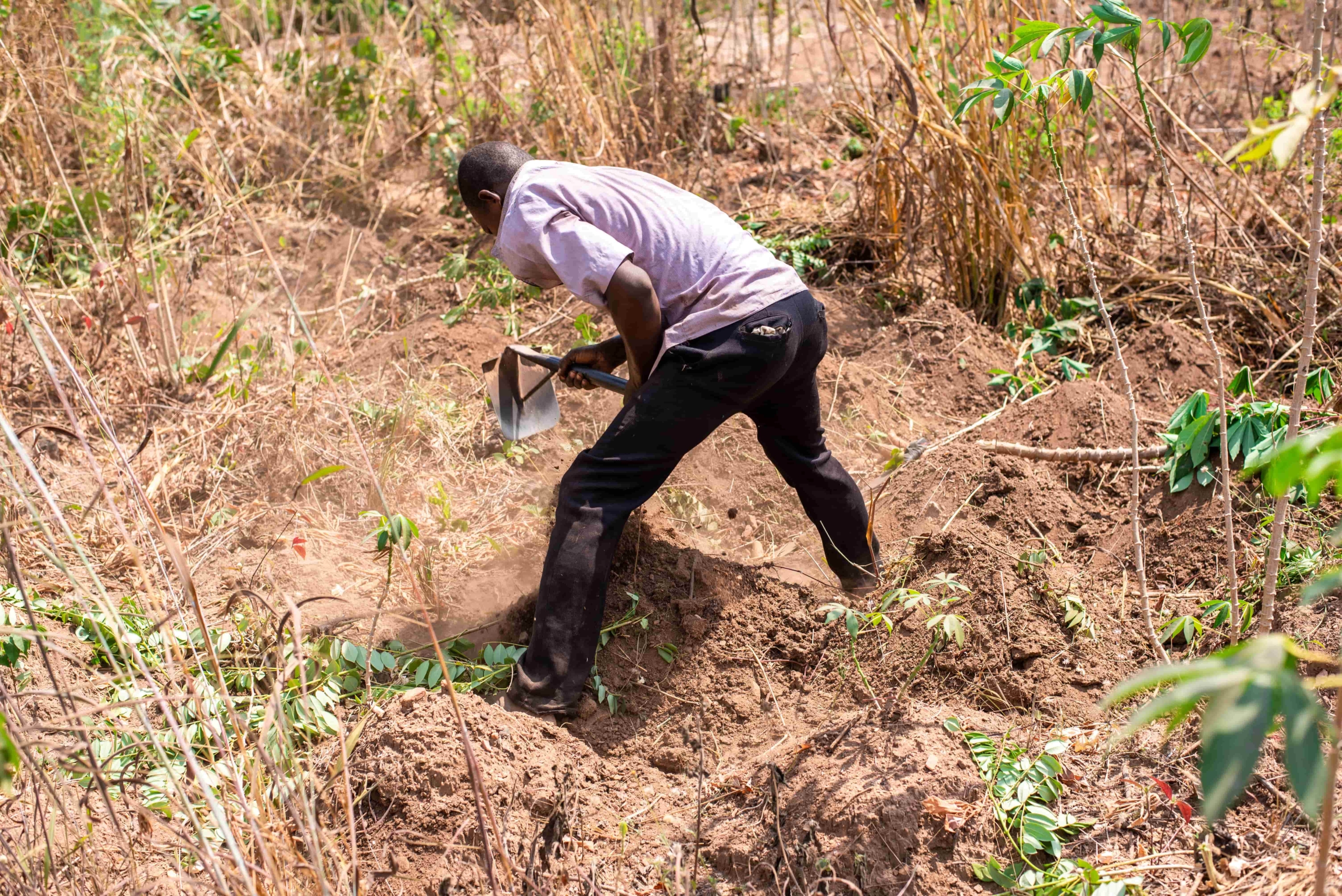

Perspectives on the Coffee Farmer Thriving Index
Between 2023 and 2024, 60 Decibels, in partnership with Small Foundation, studied over 3,000 coffee farmers across Uganda, Rwanda, and the Democratic Republic of the Congo. This research aimed to answer: “Are farmers in coffee supply chains thriving or barely surviving?”
Piloting the Farmer Thriving Index (FTI), a tool to measure farmer wellbeing via brief phone interviews, we began with a national survey of unaffiliated Ugandan farmers, later extending it to farmers in 9 cooperatives across Uganda, Rwanda, and DRC. Each cooperative received detailed reports comparing their farmers’ wellbeing with national benchmarks. This initiative was supported by Small Foundation, coffee buyers, investors, and other stakeholders. Our goal was to test a model for scaling up farmer wellbeing measurement, led by industry.
In July 2024, we published the study. We then gathered feedback from participating cooperatives, funders, and coffee sector experts to capture lessons and inform future plans for the FTI. This blog summarizes what we heard from those stakeholders.
A first for cooperatives and funders
Cooperatives cited the FTI as their first formal wellbeing assessment through an independent partner. Funders, who traditionally focused on demographics and outputs, valued the FTI’s holistic perspective. Both groups noted time, resources, and budget constraints as barriers to conducting such assessments independently.
Driving action with insights
Most cooperatives and funders found the FTI report useful. Sixty percent of cooperatives used the insights to implement actionable changes, while funders appreciated the added context on farmer challenges, complementing existing data on productivity and prices.
Demand for customization
Stakeholders emphasized segmenting results by household size, farm size, sub-regions, and income sources. Rwandan cooperatives and funders requested localized benchmarks, while others sought clarity on how farmer scores are categorized.
Flexibility for repeated studies
Cooperatives and funders recommended repeating the FTI annually over 3-5 years to capture changes due to weather and market conditions. They also sought customizable modules and open-ended questions to address specific needs and challenges.
Broader applications and corporate alignment
Supporting investment decisions
Industry stakeholders highlighted the FTI’s utility in assessing living incomes and prioritizing resource allocation. The tool’s use in cocoa value chains suggests potential in other sectors, such as the garment industry.
Aligning with corporate needs
As regulations like EUDR and CSDDD evolve, stakeholders see the FTI as a potential risk assessment tool. Linking wellbeing metrics with risk indicators could complement corporate supply chain strategies and drive interest in living income measurement.
Enhancing adoption
To encourage wider adoption, stakeholders recommended diversifying regional benchmarks, reducing measurement costs, and standardizing metrics. The FTI’s potential as a needs assessment tool for socially-minded organizations could help identify trends, challenges, and program needs.
The Farmer Thriving Index has made significant strides in understanding farmer wellbeing and holds promise as a transformative tool for the coffee sector and beyond.



